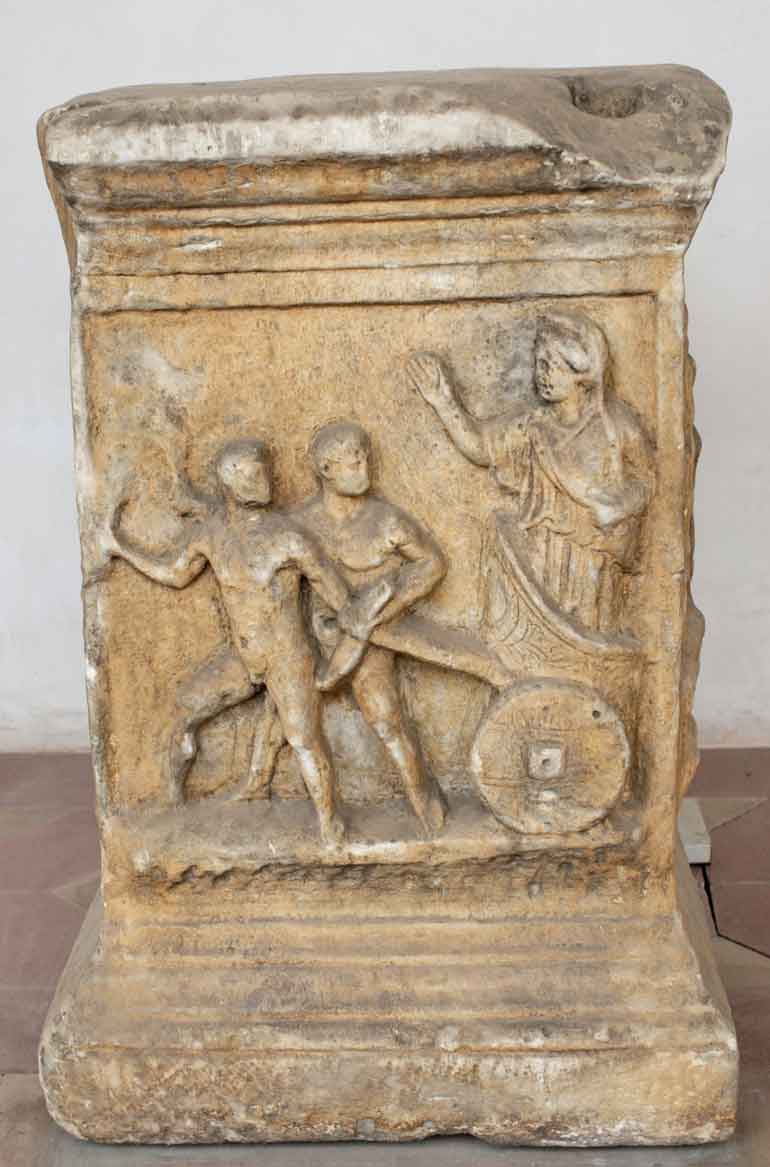|
|
Altar Kleobis Biton Terme
|

Terme di Diocleziano (Museo Nazionale Romano), Rome, Italy
Artist/Maker Unknown
Altar with the myth of Kleobis and Biton. White marble, Roman artwork of the Imperial era. Found in Via della Giustiniana in Tor Vergata in Popolo.
Italiano: Altare con il mito di Kleobis e Biton. Marmo bianco, opera romana di età imperiale. Dalla via della Giustiniana nel località Tor Vergata in Popolo.
Location Cloister
Photographer/source Jastrow (2006)
|
Kleobis and Biton from Argos, wrestlers. Herodotus writes a story about these brothers and their mother Cydippe:
|
|
When Solon had provoked him by saying that the affairs of Tellos were so olbios, Croesus asked who he thought was next, fully expecting to win second prize. Solon answered, "Kleobis and Biton." They were Argive in genos, they had enough to live on, and on top of this they had great bodily strength. Both were prize-winning athletes [athlophoroi], and this story is told about them: There was a festival of Hera in Argos, and their mother absolutely had to be conveyed to the sacred precinct by a team of oxen. But their oxen had not come back from the fields in time [hôra], so the youths took the yoke upon their own shoulders under constraint of time. They drew the wagon, with their mother riding atop it, traveling 45 stadia until they arrived at the sacred precinct. When they had done this and had been seen by the entire gathering, their lives came to the best fulfillment [ariston telos], and in their case the god made clear that for human beings it is better to be dead than to live. The Argive men stood around the youths and congratulated them on their strength; the Argive women congratulated their mother for having such children. She was overjoyed at the feat and at the praise, so she stood before the image and prayed that the goddess might grant the best thing for humanity to her children Kleobis and Biton, who had given great timê to the goddess. After this prayer they sacrificed and feasted. The youths then lay down in the sacred precinct and went to sleep, and they never got up again; they remained in the pose that they had assumed in reaching their telos. The Argives made and dedicated at Delphi statues of them, since they were aristoi.
|
|
Ancient Greece
|
Medieval Greece / Byzantine Empire
|
Modern Greece
|
|
Science, Technology , Medicine , Warfare
, Biographies , Life , Cities/Places/Maps , Arts , Literature , Philosophy ,Olympics, Mythology , History , Images
|
Science, Technology, Arts
, Warfare , Literature, Biographies
Icons, History
|
Cities, Islands, Regions, Fauna/Flora ,
Biographies , History , Warfare
Science/Technology, Literature, Music , Arts , Film/Actors , Sport , Fashion
|

|
|

